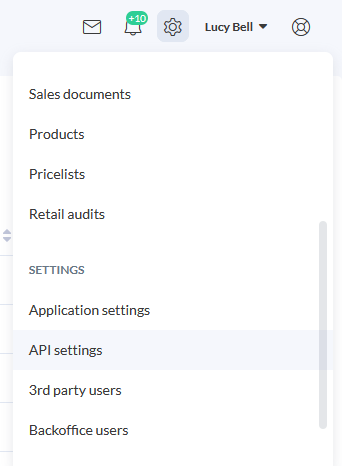What we use
Repsly's API uses Basic authentication supported by SSL encryption to keep data transfer safe.
The client sends the key and pass-code as unencrypted base64 encoded text but it is used with HTTPS to prevent data spoofing. API credentials differ from your login username and password.
ℹ️ You can find your API username and password on the Repsly settings page under API Settings.

API Settings
What You'll Need
You will need to write your own application which will communicate with both your system and the Repsly API in any manner that best suits your needs.
For communicating with the API, you will need to create an HTTP GET request to retrieve data or a HTTP POST request to send data to Repsly.
How you process the data in your own system is up to you.
Endpoints
API supports both JSON and XML formats for requests and responses. JSON format is set by default. To send a JSON request, header Content-Type should be set to “application/json”. To send an XML request, header Content-Type should be set to “application/xml”.
Also, you can choose between JSON and XML response formats by sending the appropriate Accept key in the header request with value “application/json” or “application/xml”, respectively. Endpoints support updating records (POST method) or getting records (GET method).
How to Specify Basic Authorization
There are several methods for authorization, Repsly uses Basic Authorization where client sends username:password into the request header. Username and password are encoded with Base64, which is an encoding technique that converts the username and password into a set of 64 characters to ensure safe transmission.
Example of Authorization Header Key (BASE64 encoded)
Authorization: Basic Ox5smnNlY3VyZp==
Basic Auth will also use HTTPS, message content will be encrypted within the HTTP transport protocol.